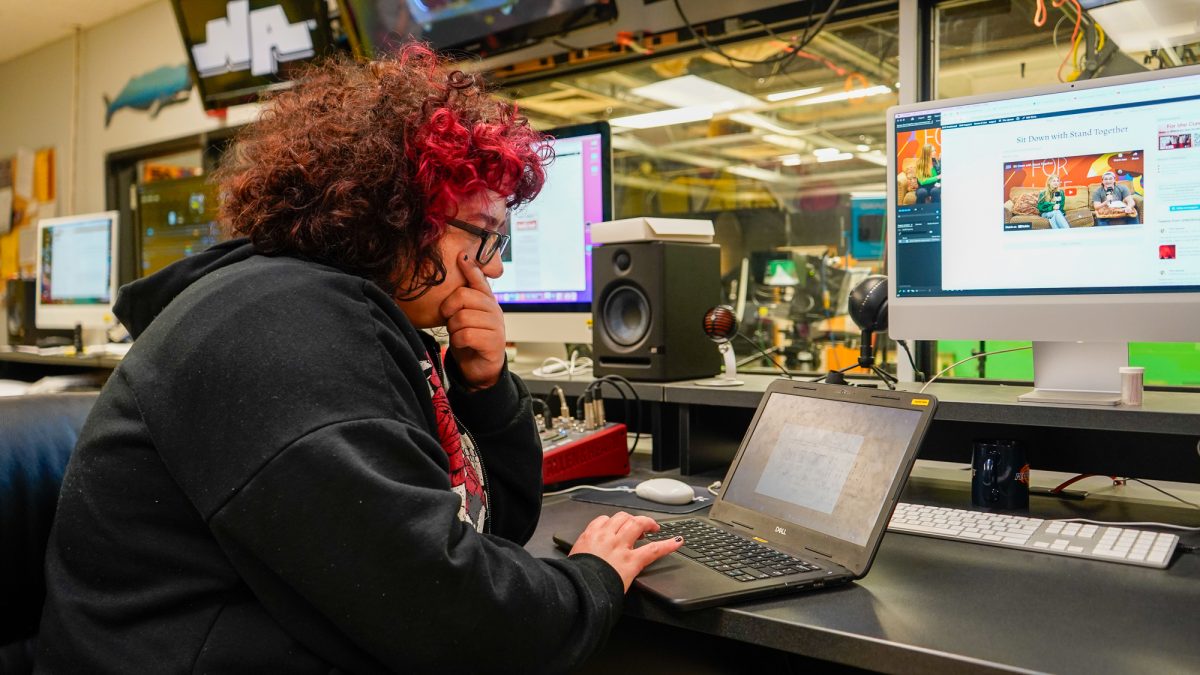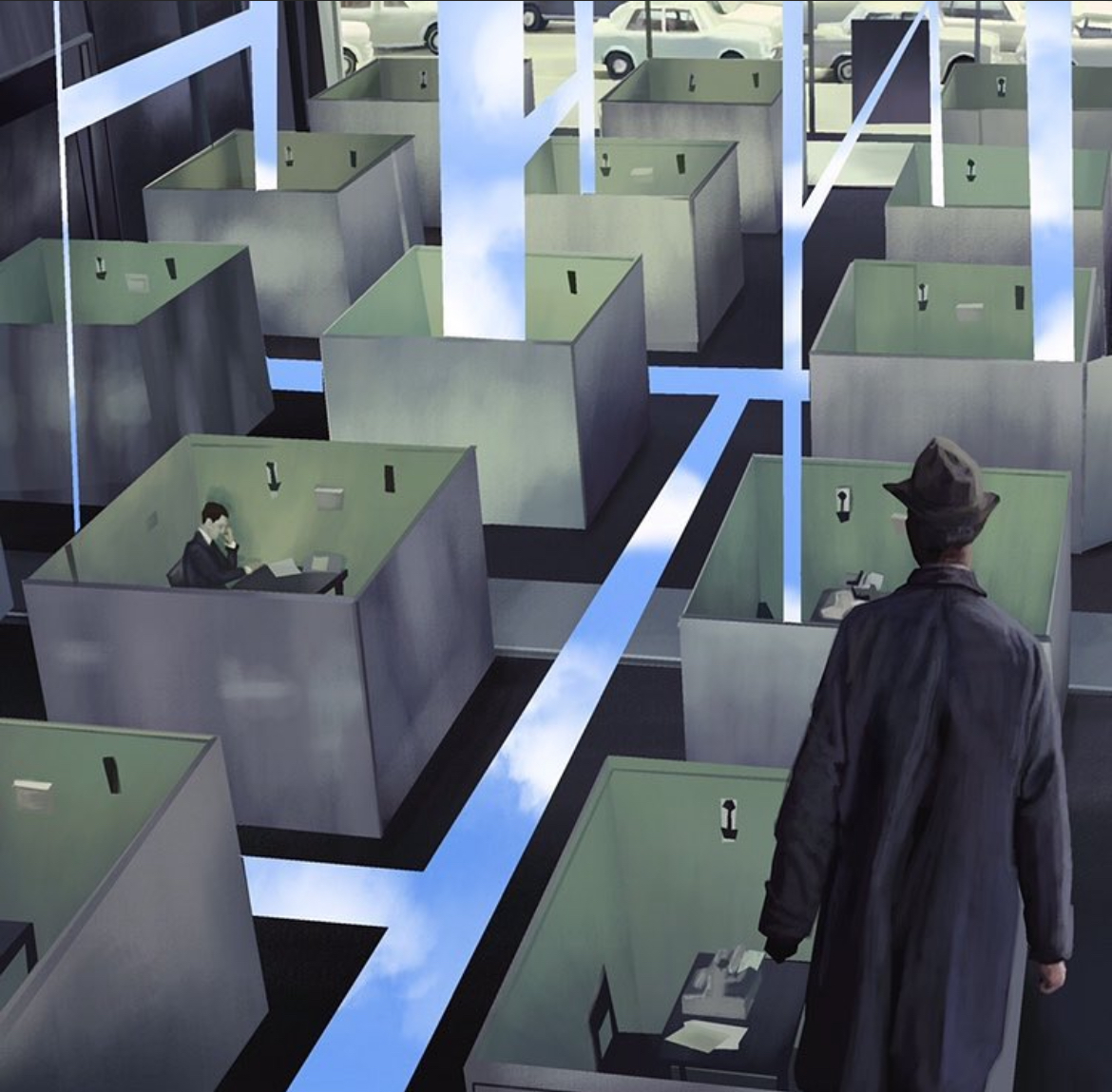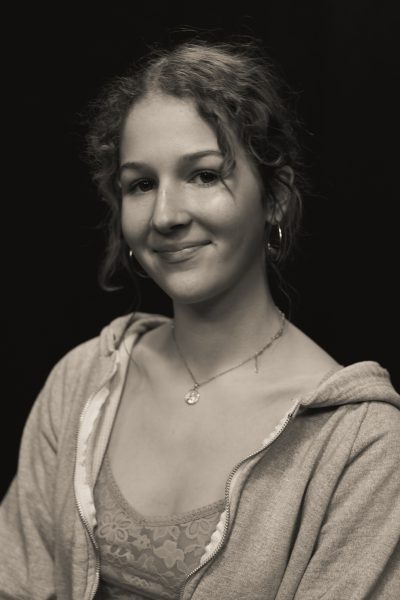In 2023, the Writers Guild of America went on a historic strike that lasted for 148 days–second in length to one in 1998 by the margin of a few days. With the WGA having secured a tentative three year contract, this event marks a significant step towards preserving the rights of writers, actors, and artists in the industry.
Having worked in post-production at a prominent visual effects studio called Powerhouse VFX prior to the strike, Pittsburgh artist Alex Batista offered an inside perspective in an interview with The Uproar.
Behind the scenes–and before the strike–Batista, a Point Park University digital media graduate, worked to create the perfect shot.
“I worked in their Roto and Tracking department,” he said, “Basically, I’d take the raw plate, which is what they shot without any visual effects, and I would take different points in the shot and triangulate it to figure out what the camera was doing.”
Batista is one link in a chain of artists who collaborate to finish each shot.
“From there, I would build the camera out, figure out what camera they used, find the distortion on it, and then pass it along to other artists to work on,” he added.
Batista has worked on several shows, most notably Netflix’s Stranger Things.
“So if they wanted to put a demogorgon in the background that they painted, the visual effect would ‘stick’ to the screen after,” he said.
However, with all production ceasing due to the strike, Batista was let go from his position at the end of March 2023.
“There was no big movement from us [visual effects] to strike, but because the writers and actors both went on strike simultaneously, the whole industry shut down,” he explained.
Batista had anticipated that production might resume earlier than expected.
“I thought it might break around midsummer because of the blockbuster season, but it went a bit longer than that,” he said.
One of the primary causes that brought rise to the strike was the increasing fear of AI’s possible uses in the industry, the factor which most directly affects the future of Batista’s line of work.
While there are ongoing debates surrounding the possible uses of Generative AI in the workplace, its potential consequences are vastly unknown and unexplored. Although this technology is still in its infancy, it already possesses stunning capabilities. Batista mentioned one particular kind of AI that was recently released and can produce hyper-realistic videos at the press of a button.
“[Sora] is only two years out, but it’s almost indistinguishable [from human work],” said Batista, “All you have to do is type in a prompt, and it spits out a visual representation.”
Like most artists, Batista remains weary of AI’s implications in his profession.
“There’s a pretty big fear of AI amongst artists,” he said. “People are trying to adapt, but this gets you 90% there.”
After devoting years to learning countless graphic design programs, the possibility of AI replacing the field is deeply discouraging.
“The thing that’s the most disappointing is that I finished learning about all these different programs, and there are a million of them,” he said, “Cinema 40, all the Adobe suites, Photoshop After Effects, Cinema 3 Equalizer, etc.”
AI poses a threat to the job security of millions who work in the industry–not only actors and writers–but those behind the scenes as well.
“What’s even more infuriating is that companies like Google and Facebook, which owns Instagram, source the art that I posted,” Batista said. “So they’re taking artists’ work and using it to replace their jobs. It’s hitting Hollywood first,” Batista said, “but I think it’s going to disrupt a lot of different industries.”
Fear over the future of the arts industry is affecting high school students, as well. NASH senior Layla Musselman, who has committed to Point Park as a Cinema Arts major with a concentration in screenwriting, is deeply concerned.
“I understand the screenwriting will likely join the gig economy, but with the introduction of AI, there’s more incentive for studios to not pay their creators,” Musselman said.

Nevertheless, the future of AI remains hazy.
With the strike having reached its conclusion and the agreement settled between WGA and the Alliance of Motion Picture and Television Producers, Batista expects his work will resume soon.
“The company I was working for said they would begin rehiring in spring and summer, and I believe they’re going to hire back in full force,” he said.
Looking forward, Batista hopes that the strike will facilitate a positive change in post-production.
“As far as the strike, I think it was a great thing, and I hope that, ultimately, visual effects unionizes from it since we’re not unionized right now.”
The agreement between the WGA and the Alliance of Motion Picture and Television Producers can be found here.




